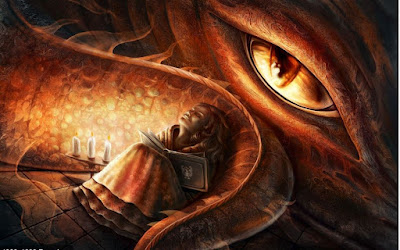- Charles Dickens
Welcome!
Tuesday, March 1, 2022
Happy March!
- Charles Dickens
Wednesday, February 23, 2022
Black History Month - Celebrating African-American Inventors
 |
| Clockwise from top left: Benjamin Banneker, Madame C.J. Walker, George Washington Carver, Dr. Shirley Jackson, and Dr. Daniel Hale Williams. |
Monday, February 21, 2022
Black History Month - The story of a brilliant African American inventor
Thursday, February 17, 2022
The Bookish Calendar for March - Books for March birthdays, holidays, and special days
Wednesday, February 16, 2022
Book Hoarding? What's that?
Dragon: Do humans hoard things?
Human: Sometimes, I guess. Do you have a big pile of treasure somewhere?
Dragon: Absolutely not! Those gold hoarding dragons really give us a bad name!
Human: So what do you hoard?
Dragon: Books, of course
Human: But you're a fire dragon.
Dragon: I know! I find these poor abandoned books, but I can't even read them because I'll burn them
The human runs off and grabs an armful of books, before coming back to sit by the dragon.
Human: "Chapter One. The Mole had been working hard all the morning, spring-cleaning his little home. First with brooms, then on ladders and steps and chairs, with a brush and a pail of whitewash; till he had dust in his throat and splashes of whitewash over his black fur, and an aching back and weary arms. Spring was moving in the air above, below, and around him, penetrating even his dark and lowly little house with its spirit of divine discontent and longing.”
Tuesday, February 15, 2022
Newsletters from Groundwood Books for Educators, Librarians, and Parents
The 2021 Caldecott Award Winning Picture Book - Watercress
Friday, February 11, 2022
The new television series of Around the World in Eighty Days
This February the BBC and Masterpiece released a new television series that is loosely based on the story in Jules Verne's Around the World in Eighty Days. The story has been changed a fair bit, but I have to say that it is very entertaining, and is beautifully made. I am enjoying the series a great deal, accepting that this is an adaptation of Jules Verne's tale. If you are a purist and only watch films that are faithful to the books that inspired them, then this series will probably not suit you.
Thursday, February 10, 2022
Did anyone try to go around the world in eighty days?
In Jules Vern's book, Around the World in Eighty Days, the heroes in the story are men. The book was first published in French in 1872, and at this time adventure stories did not have female heroes; it simply wasn't done.
The story caused quite a stir, and I would have thought that many gentleman adventurers would have tried to duplicate the journey taken in the book. I cannot find a record anywhere of a single man doing so. Not a one. Really, did none of the gentleman adventurers of the time read books? Did none of them have even a soupcon of imagination or derring-do?
Apparently not. It wasn't until 1889 when someone took on the challenge. A woman called Nellie Bly undertook to travel around the world in eighty days for her newspaper, the New York World. She managed to do the journey within seventy-two days, and she met Jules Verne in Amiens in France. Her book Around the World in Seventy-Two Days became a best seller. Who was this remarkable woman?
Cochran, Pennsylvania. At the age of six, Bly lost her father. Unable to maintain the land or their house, the family moved. Her mother also remarried but later divorced due to abuse. While attending Indiana Teacher’s College, Elizabeth added an “e” to her last name becoming Elizabeth Jane Cochrane. Due to the family’s financial crisis she was unable to finish her education. No longer in school, Bly focused on helping her mother run a boardinghouse. One day an upset Bly decided to pen an open letter to the editor of the Pittsburgh Dispatch. Her short but important piece pointed out the paper’s negative representation of women. The editor not only read Bly’s response, he printed her rebuttal, and offered Bly a job as columnist. As a newspaper writer, she took the pen name Nellie Bly. Although Bly was a popular columnist, she was often asked to write pieces that only addressed women.
Wanting to write pieces that addressed both men and women, Bly began looking for a paper that would allow her to write more serious work. In 1886, she moved to New York City. As a woman, Bly found it extremely hard for her to find work. In 1887, Nellie Bly stormed into the office of the New York World, one of the leading newspapers in the country. She expressed interest in writing a story on the immigrant experience in the United States. Although, the editor declined her story, he challenged Bly to investigate one of New York’s most notorious mental hospitals. Bly not only accepted the challenge, she decided to feign mental illness to gain admission and expose how patients were treated. With this courageous and bold act Bly cemented her legacy as one of the foremost female journalists in history.
 |
| Nellie wearing her travel outfit. |
I have reviewed several books for young readers about Nellie Bly, which you can find in the TTLG library.













